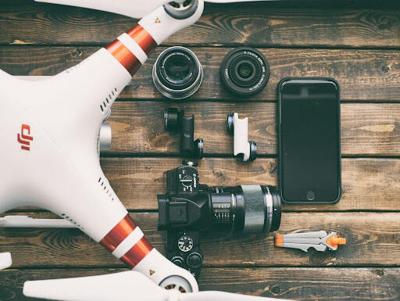
Technology plays an important role in improving processes and outcomes in the ever-evolving construction industry. One of the most significant advancements in recent years is the concept of reality capture. This technology allows construction professionals to create precise digital representations of physical spaces. Using various tools and methods, reality capture transforms how teams document projects, enhancing accuracy and efficiency. This post explores the benefits of reality capture and how it can streamline construction photo documentation.
What is Reality Capture?
Reality capture involves using various technologies to capture and accurately represent the physical world in a digital format. Tools like 3D laser scanners, drones, and photogrammetry software gather data from construction sites and create detailed, accurate models. These digital representations provide information that helps construction professionals visualize projects better and make informed decisions.
The process typically starts with capturing images and measurements of a site. High-resolution cameras, drones, and other devices collect visual data. Once gathered, specialized software processes this data to create 3D models, point clouds, or orthophotos. These digital outputs serve as powerful tools for project management, allowing teams to monitor progress, identify issues, and plan effectively.
Benefits of Reality Capture in Construction
Incorporating reality capture into construction projects brings numerous advantages. Here are some key benefits:
Enhanced Accuracy: Reality capture provides highly detailed and accurate representations of construction sites. This accuracy helps teams avoid costly errors and miscommunications, saving time and resources.
Improved Collaboration: Different teams can collaborate more effectively with a shared digital model. Architects, engineers, contractors, and anyone else involved in the project can access the same visual information, ensuring all are on the same page throughout the project lifecycle.
Efficient Documentation: Traditional photo documentation often leads to disorganized and incomplete records. Reality capture streamlines this process, allowing teams to capture comprehensive site data in a structured manner. This organized documentation is invaluable for project reviews, inspections, and future reference.
Real-Time Updates: With reality capture, teams can regularly update their digital models to reflect the project's current state. This real-time data helps monitor progress and allows timely adjustments to keep projects on track.
How Reality Capture Works
The reality capture process involves several steps that combine various technologies. Here’s a closer look at the workflow:
Data Collection: Construction teams use laser scanners, drones, or high-resolution cameras to gather data from the site. The choice of technology depends on the project requirements and site conditions.
Data Processing: Teams use software to process the data after collecting the images and measurements. This software converts the raw data into usable digital formats, such as 3D models or point clouds.
Model Creation: The processed data forms a digital model of the construction site. This model serves as a virtual representation that teams can analyze and manipulate.
Integration with Other Tools: Reality capture models can be integrated with other construction management tools and software. This integration allows teams to utilize the captured data for project planning, scheduling, and resource allocation.
Key Technologies in Reality Capture
Several technologies play a significant role in reality capture, each offering unique features and capabilities. Here are some of the key technologies:
3D Laser Scanners: These devices capture millions of data points in a short time, creating precise 3D models of structures and environments.
Drones: Unmanned aerial vehicles equipped with cameras can quickly capture extensive aerial imagery and data, providing an overview of large sites.
Photogrammetry: This technique uses overlapping photographs to create detailed 3D models. It is especially useful for sites where traditional scanning is challenging.
BIM Integration: Building Information Modeling (BIM) can work seamlessly with reality capture technology, allowing teams to overlay captured data onto existing plans and designs.
Future of Reality Capture in Construction
Reality capture will play an increasingly vital role as the construction industry continues to adopt advanced technologies. The ability to gather accurate data and create digital representations will enhance project delivery and improve overall efficiency.
Construction professionals should consider incorporating reality capture into their workflows to stay competitive. With the right tools and processes, reality capture can revolutionize photo documentation and project management, blazing the trail for a more efficient and precise construction industry.
Reality capture represents a powerful tool that can transform construction documentation. Its ability to provide accurate, detailed representations of physical spaces allows teams to collaborate effectively and streamline their workflows. Embracing this technology improves efficiency and ensures that construction projects meet the highest standards of quality. As the industry evolves, those who harness the power of reality capture will undoubtedly gain a significant advantage in delivering successful projects.



(0) comments
We welcome your comments
Log In
Post a comment as Guest
Keep it Clean. Please avoid obscene, vulgar, lewd, racist or sexually-oriented language.
PLEASE TURN OFF YOUR CAPS LOCK.
Don't Threaten. Threats of harming another person will not be tolerated.
Be Truthful. Don't knowingly lie about anyone or anything.
Be Nice. No racism, sexism or any sort of -ism that is degrading to another person.
Be Proactive. Use the 'Report' link on each comment to let us know of abusive posts.
Share with Us. We'd love to hear eyewitness accounts, the history behind an article.